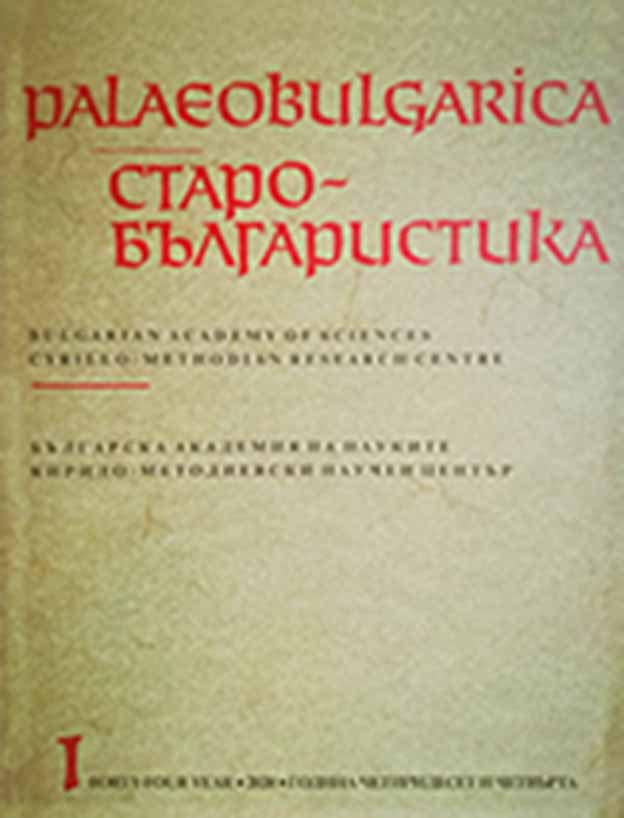Древнeйшая славянская традиция Словa XVI Григория Богослова: старославянские версии и проблемы их изучения
The Oldest Slavonic Tradition of Gregory the Theologian’s Oration XVI: the Old Church Slavonic Versions and Problems of Their Analysis
Author(s): Alessandro Maria BruniSubject(s): Language studies, Language and Literature Studies
Published by: Кирило-Методиевски научен център при Българска академия на науките
Keywords: Old Church Slavonic language; slavonic manuscripts; textual History; textual criticism; lexicology; homiletics; Gregory of Nazianzus
Summary/Abstract: The present research focuses on a number of linguistic and textual issues of the Old Church Slavonic versions of Gregory the Theologian’s Oration XVI On His Father's Silence, Because of the Plague of Hail (Εἰς τὸν πατέρα σιωπῶντα διὰ τὴν πληγὴν τῆς χαλάζης / In patrem tacentem propter plagam grandinis, PG 35: 935–964). Moreover, the paper aims at providing readers with a new edition of the earliest translation of the sermon that is given in appendix. The author argues that during the Old Bulgarian period (late ninth – early tenth century) existed multiple translations of Gregory the Theologian’s Oration XVI. A first version is to be found in the eleventh-century codex P (St. Petersburg, Russian National Library, Q.п.I.16, Collection of the thirteen Sermons), while a second one in a number of East Slavic manuscripts dating from the fourteenth-seventeenth centuries, as well as in a Middle-Bulgarian source dating from the fourteenth century (Sofia, National Library “Cyril and Methodius”, N° 674). A third fragmentary translation is found in the Izbornik of Sviatoslav of the year 1073 (Moscow, State Historical Museum, Syn. 1043). The oldest version of Oration XVI displays an archaic language and four interpolations, three of which are directed against pagan beliefs and practices. The sermon does not faithfully replicate its Greek model, not only because of the interpolations, but also in view of the fact that the text is generally shorter in length and lacks the initial and final chapters. This points to a reworking of the original that was used with polemical intent in an environment, where superstitions and remnants of a pagan past were still alive. In the author’s view, this particular redaction originated in a Bulgarian milieu and should therefore not be ascribed to an East Slavic author. On the contrary, the second translation of Oration XVI represents a literary rendering of the liturgical Byzantine text. The study of its linguistic features shows the existence of lexical traits that are typical of the so-called Preslav literary School. This version was included in the Old Church Slavonic liturgical collection of the Sixteen Homilies of Gregory the Theologian, in which it initially circulated without the Commentaries by Nicetas of Heraclea that represent a later addition dating most likely from the twelfth century.
Journal: PALAEOBULGARICA / СТАРОБЪЛГАРИСТИКА
- Issue Year: 2020
- Issue No: 1
- Page Range: 28-52
- Page Count: 25
- Language: Russian, Old Bulgarian
- Content File-PDF

